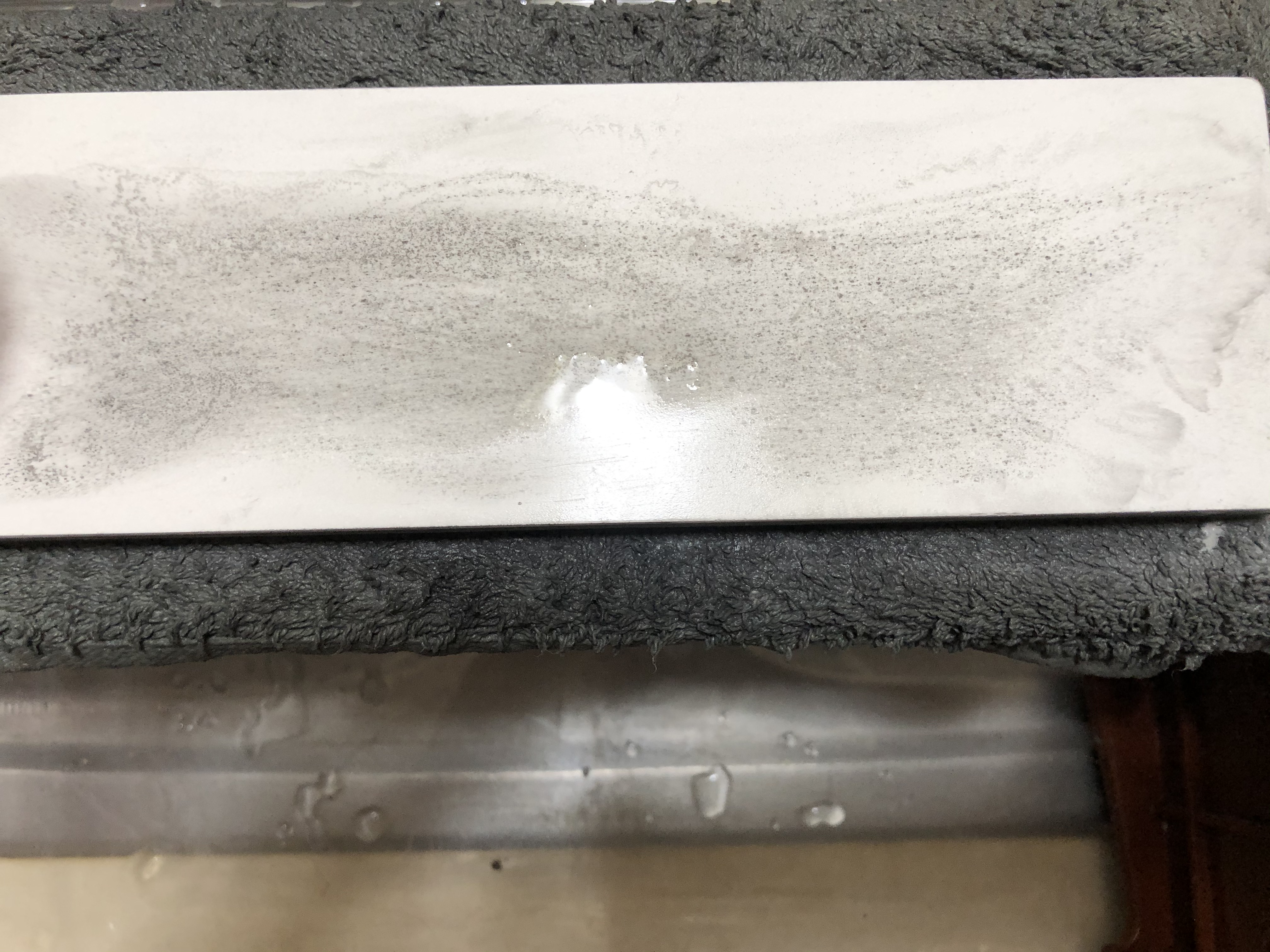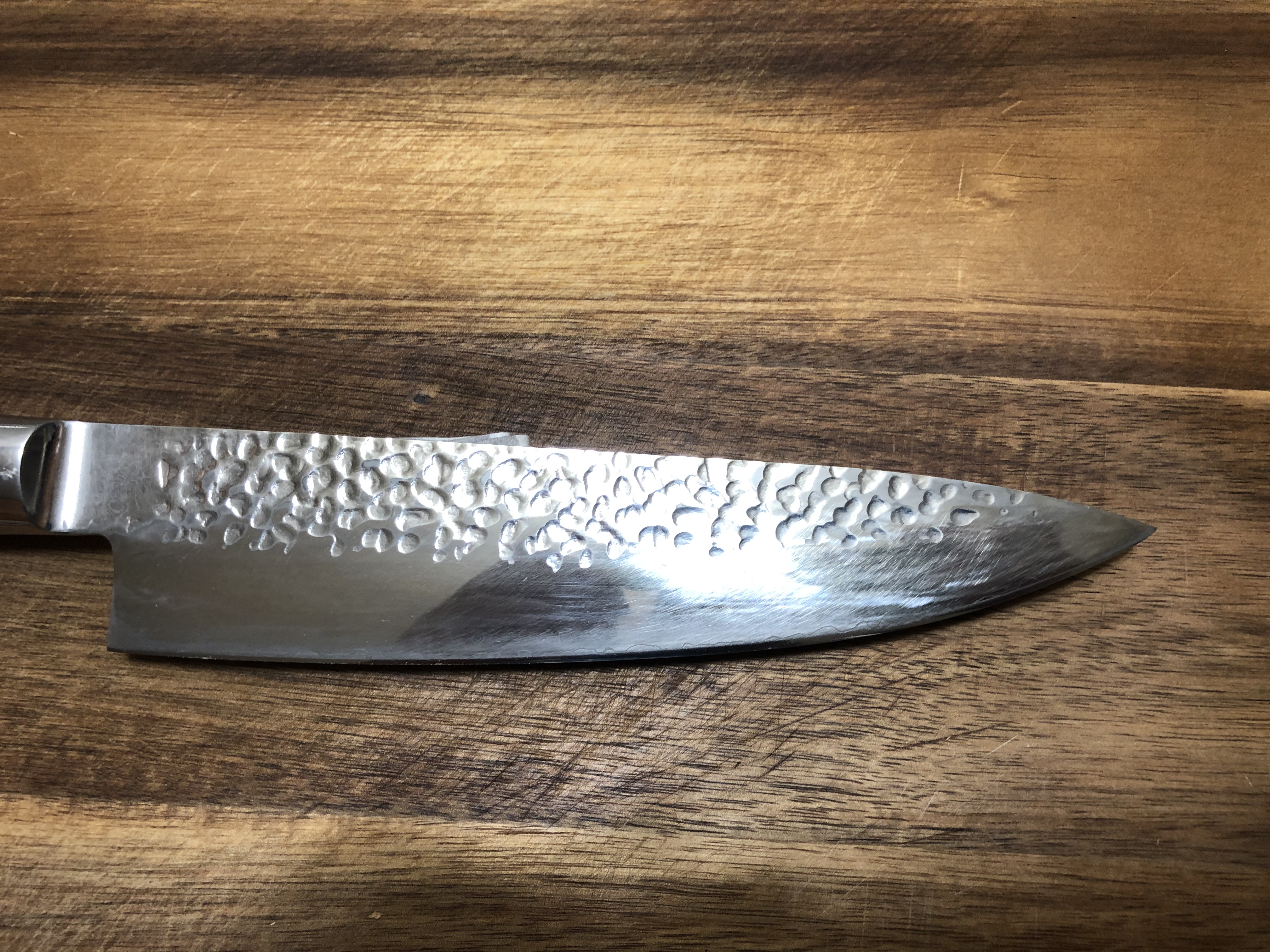Isabella Shiri
Member


I just received a Shapton Glass #16000 yesterday, mainly for the purpose of finishing the sides on certain knives, after thinning, before stropping. My main question is roughly how much time should I need to spend on this stone to get it to the point to where it's broken in? I was using it to finish up a thinning on my cheap 8" VG-10 chef's knife, which was purchased for the sole purpose of practicing & experimenting with various knife maintenance techniques. It began to load up as soon as I started using it to finish up thinning of the secondary bevel(the first picture of the load up is not as extreme as it had initially occurred, I just did a quick few strokes to give an example). I also own a Kitayama #8000, and it too behaved very similarly when it was new. It took about a half dozen sharpenings to get to the point where it wouldn't immediately load up. The load up on the SG #16000 is also similar to the nature of the load up I experienced on my K-#8000, as it acted like there was something sticky on the blade such as tape adhesive, which after loading up, would have a tendency to begin to ball up & roll around under the blade edge. The load up on the SG #16000 came off very easily after gently rubbing the a medium grit nagura over it, and after that, the load up built up to a slower degree(only when I left the nagura slurry on). I never seriously expected to be able to get a mirror finish on the secondary bevel on the knife in the lower picture(which I photographed at an angle to show the scratching as much as possible), but had hoped to be able to do a little better than the results above. So my second question is, after the SG #16000 is broke in, will it be a better polisher, or remain just as aggressive as now? Thank you in advance for any, and all replies.
Last edited:





